Interview: "I think it’s probably the best guitar design overall ever" – talking Telecasters with Jason Isbell
"For the price it’s unbeatable" he says of his new Fender signature model
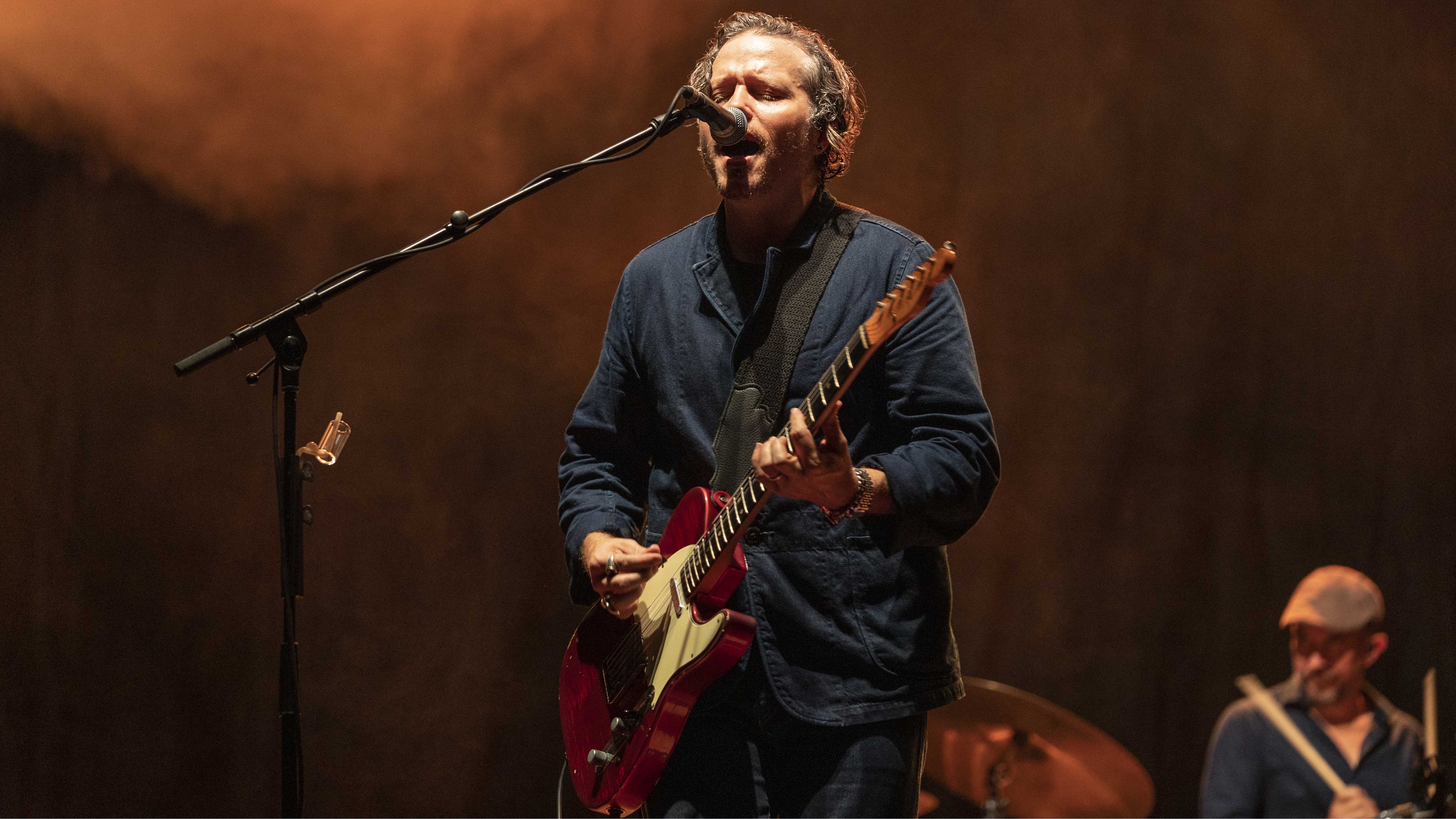
"I didn’t sign it anywhere," says Jason Isbell of his first signature electric guitar. A feature of an artist model that can often be a divisive subject. The Grammy Award-winning songwriter simply sidestepped the issue while still adding a very personal touch.
"I put my tattoo there on the neck plate," he tells us. "It’s the logo that we use on stage, and on all our roadcases and merch and stuff. I got it in New Zealand many years ago. I’d just recently gotten sober and it was the first trip I’d been on since I quit drinking. It was my wife’s birthday and we went to a Maori tattoo shop and got matching tattoos. It was a cool time and I like to remember it whenever I can, it’s wound up on all of our road cases and t-shirts and caps and stuff.
"So rather than put my signature on the headstock - I like how they design looks as it is - I just left it the way it was designed."

Like Joe Bonamassa, Isbell is a genuine connoisseur of fine vintage guitars – and he plays them. But the Jason Isbell Custom Telecaster isn't what many might have been expecting; it's not only relatively affordable but based on a a few guitars he's favoured, including guitars that proved to be mainstays in his touring rig with the 400 Unit band.
It was only fitting that we found out more in an in-depth Tele and tone talk…
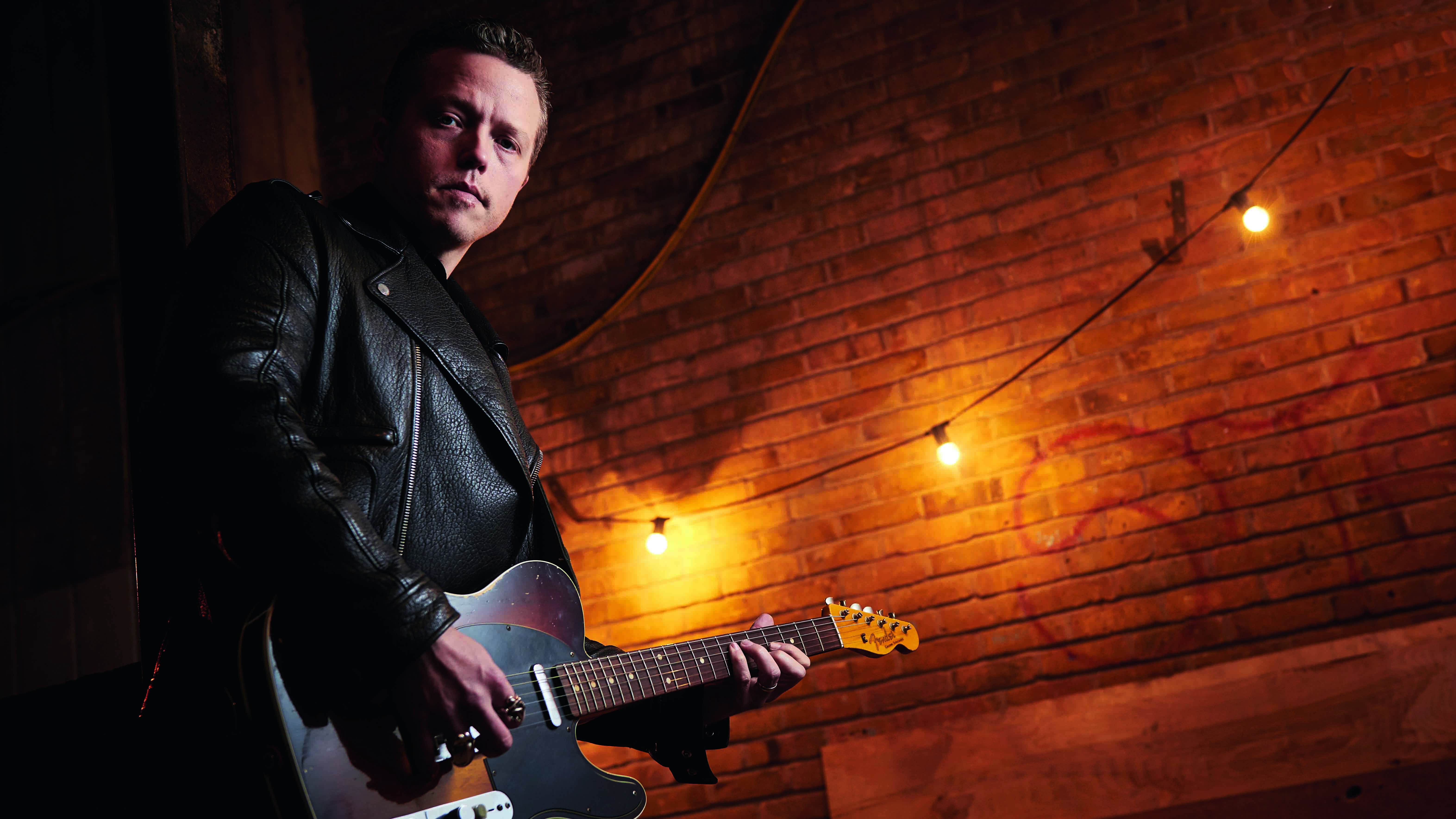
What was the basis for your new signature Telecaster?
"There’s a couple of different models that the new one really came out of. I’ve got a Custom Shop Tele that’s probably 8 or 10 years old that I’ve played a whole lot. It’s got a Twisted Tele neck pickup, and I really like that pickup. It’s a Telecaster Custom, early ’60s Custom Shop sort of thing. I put a black pickguard on it just because I like the way that looks on a Tele Custom, it’s double-bound, rosewood ’board and I’ve used it for hundreds of shows. I very rarely need to tune it! I like the bridge pickup on it - it’s like a whiteguard, staggered pole pickup so it compensates for the D string and the G string and it’s super-hot.
Get the MusicRadar Newsletter
Want all the hottest music and gear news, reviews, deals, features and more, direct to your inbox? Sign up here.
"Then I have a 1965 L-series Tele that has the best bridge pickup as far as not being a flatpole. The blackguard flatpole pickups are one thing, then there’s the staggered pole piece pickups which are a whole different ballgame. They’re less like a lapsteel pickup - not quite as bright and usually a little bit hotter.
"So we did the bridge pickup [on the signature] based off that ’65, and we also used that as the basis for the neck profile, it’s sort of a small C. I’m not sure if [the ’65] was sanded or just played that much, of course it would have started with a glossy neck. But now it’s sort of gritty and smooth, but it’s sort of rounded so it looks like that might have happened just through playing. So that’s what we tried to copy.
"We went through a couple of different necks, I have a prototype here and the neck is just a little bit too rough. It feels sanded, but I wanted it to be more like hand-rubbed. So they sent another one and they got it right.
"Then the fret size - there’s a wire that I use on everything of mine. When I get a vintage guitar and I get new frets on it, I use the same size. I’m not sure what size it is exactly, Fender would be able to tell you, but it’s one that Joe Glazer found that he puts on all of mine. It doesn’t have a wider footprint, but it’s taller than the standard vintage frets. That’s what I like on everything, I’ve got probably a dozen guitars with that wire on it. So Fender got that down, and they got the profile down. Then we put the trussrod access on the headstock to make everything a lot easier.

"We balanced them out by making the neck pickup a bit hotter"
"[Fender Custom Shop builder] Tim Shaw did both the pickups on the signature model, and the neck pickup is like the Twisted Tele, only hotter. That was my only issue with the Twisted Tele, they sound great - a lot like a Strat, and they keep a lot of high end in the neck position - but they’re usually really quiet and clean. It’s difficult to get them to overdrive without blasting the bridge pickup out at the same time. So we balanced them out by making the neck pickup a bit hotter.
"It’s a little bit more scooped than a standard Tele pickup would have been in the ’60s. You’re getting more high end, and it’s a little bit more Strat sounding to me, which I think is useful for a Telecaster in some situations."
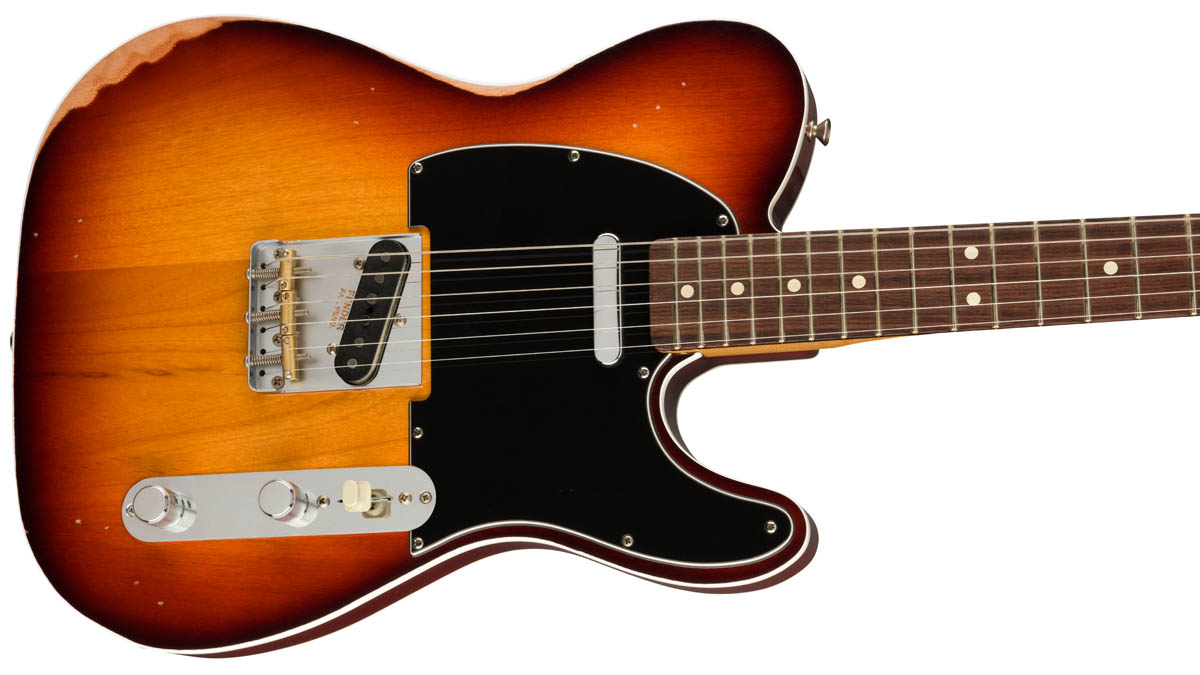
"That pickup is a really big advancement for Fender because it takes something that sounds like a Tele but then has that frequency range of a Strat"
Was there much back-and-forth to get the pickups right?
"Not really, Tim’s fast and he knows what he’s doing so I just took the '65 and let him have it for a couple of weeks. He went through it, measured everything out and wound up some pickups that he thought would approximate it. He got super-close, it sounds a lot like that original guitar: it’s hot but it still cleans up well. Then the Twisted Tele thing, he’s been working on that by himself for a while now. That pickup is a really big advancement for Fender because it takes something that sounds like a Tele but then has that frequency range of a Strat, I think he’s been trying to break up a little easier for some time.
"What I wind up doing a lot with two-pickup vintage guitars, is, I’ll set the neck pickup first. I’ll set the pedals and amp and EQs to that. Once I’ve got the sweet spot, I’ll go to the bridge and roll the tone knob down until they match up sonically. Teles and Les Pauls have that in common, where if you get bright enough on the neck, it’s going to be too bright on the bridge. But I love treble, so too bright is a relative term!"
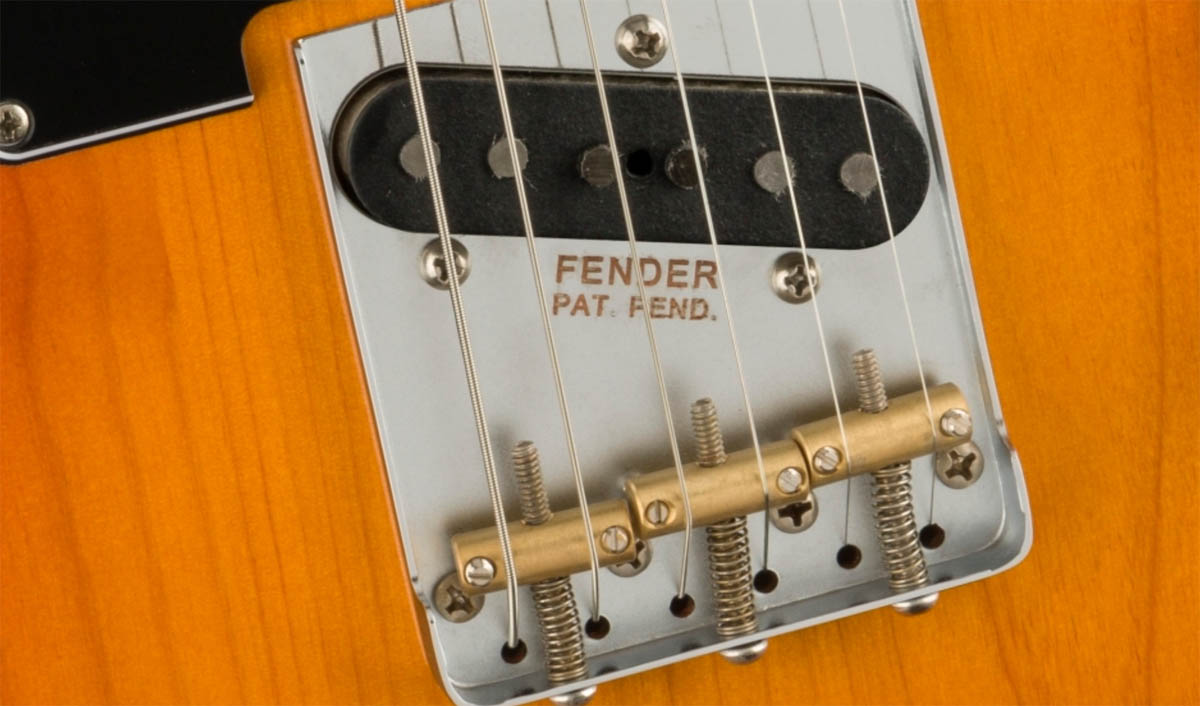
Fender describes the bridge as ‘chicken picking-friendly’, what’s different there?
"We cut the bridge away a little around the part that would have held the ashtray on. It’s to make things more comfortable for palm-muting, which I do a lot of, especially if I’m playing slide. I think it works great. There are a lot of Tele players who anchor their fingers on the bottom of that bridge plate, and there’s still enough there to hang on to. But I kind of play to the guitar, some of mine still have the original ashtray screws sticking way up, so I’ll just move my hand. But on the signature one we’ve eliminated all of that.
I think the three-saddle bridge sounds better. There’s fewer things to slow down the vibrations [versus a six-saddle]. I’m sure there are better designs to get you more accurate intonation, but honestly, that’s not really my top priority. It’s a guitar, there’s no way you’re going to play it 100% in-tune all the way up and down the neck. As long as you’re not horribly out then I don’t care!
"If I was a beginner guitar player I wouldn’t use a maple fingerboard Tele, because whatever you play is what you’re going to hear"
A lot of your Teles have rosewood fretboards, is that down to your preferred era, or is it tonal too?
"I love maple fingerboards too, but there’s something very forgiving about rosewood. If I was a beginner guitar player I wouldn’t use a maple fingerboard Tele, because whatever you play is what you’re going to hear. It’s very precise, and if you make a mistake you’re going to hear it. The rosewood just softens things up a little, rounds it off. For this particular profile it felt right, plus you’ve gotta have a rosewood board for a Telecaster Custom!"
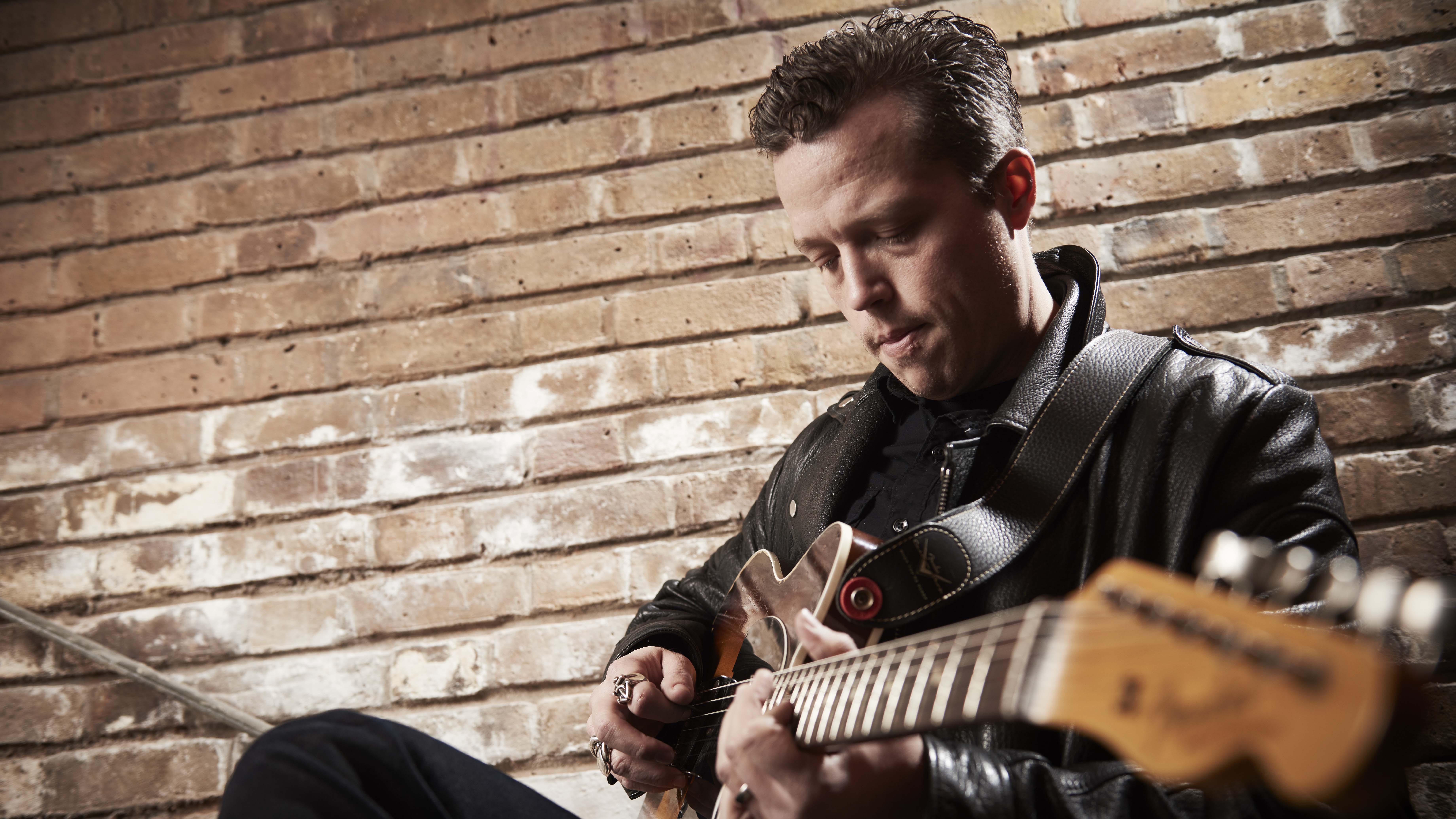
"I think for the price it’s unbeatable, because you can’t really get all these features on a guitar unless you go to the Custom Shop"
It’s a fantastic-looking guitar…
"It’s double-bound, and I think the relic’ing is tasteful. The black pickguard looks great with the double binding and the sunburst. To me it’s a little bit like a 60s three-color sunburst that the aniline dye has faded out of. If it was an old guitar I’d assume it was a three-color and the red had faded, which is what happens to those guitars.
"I think for the price it’s unbeatable, because you can’t really get all these features on a guitar unless you go to the Custom Shop. The ageing is nuts! It’s just based on where I’d play naturally. I didn’t want to heavily age it because I’m not that kind of player.
"I don’t like to get vintage guitars that are all beat-up because they feel too much like somebody else’s guitar at that point. If they’re going to get marked-up I’d like to be the one who does the marking. It’s really hard to get it right, there are four or five people who are really able to age a guitar and really get it right. If you go too far with it then it’s like CGI. I think [now] going to be one of those eras where we go back and say ‘They were making really, really great guitars inexpensively at that point’."
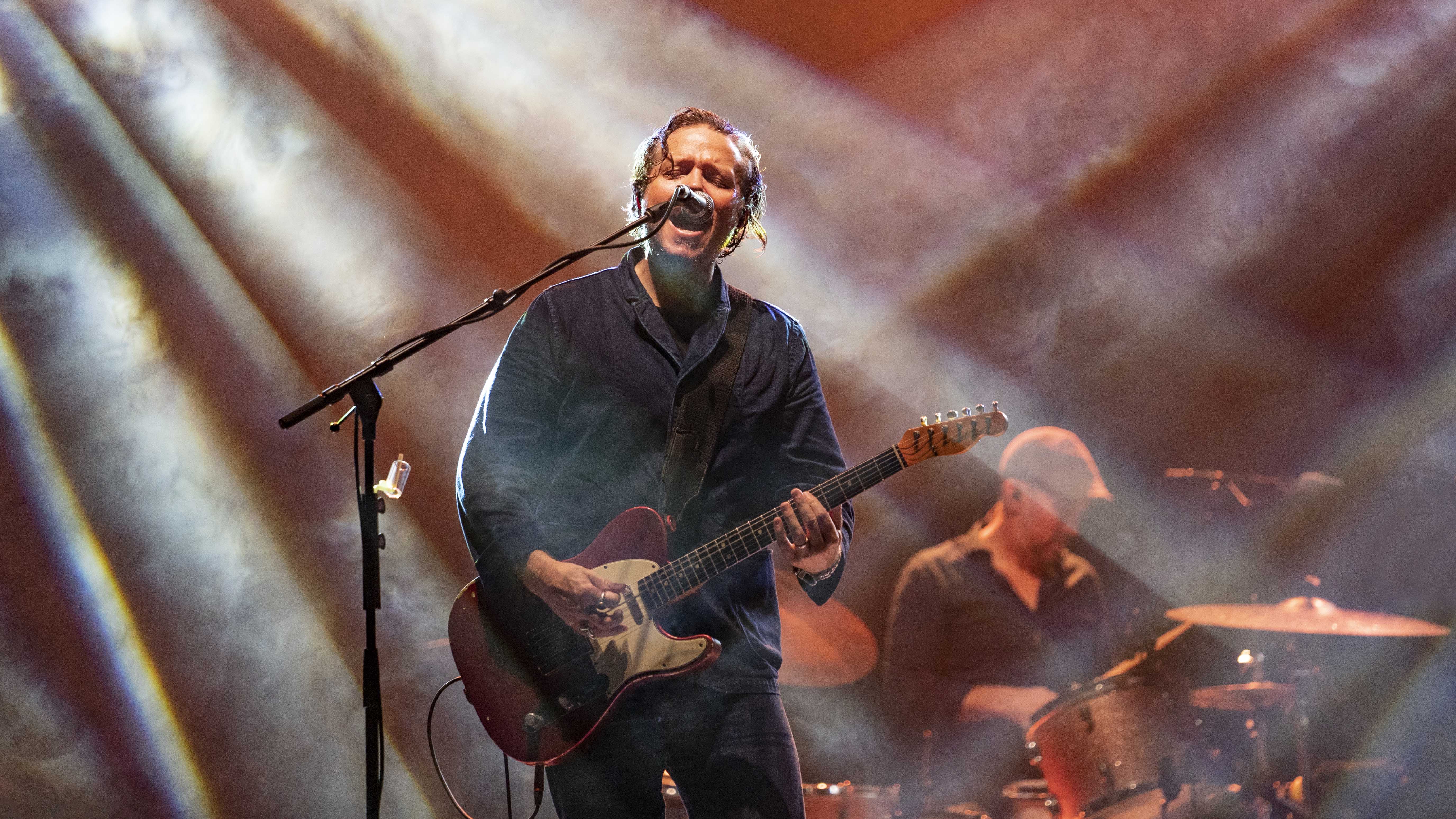
"That front position on a Tele through a gated fuzz can almost sound like a synthesizer if you play it without a lot of vibrato"
The Tele lends itself to a lot of adjustment from the controls, is this something you find yourself doing regularly?
"Oh yeah, I’m fiddling with the controls all the time. If you’re playing an old Strat, you don’t have any kind of tone control on the bridge pickup, so that’s all volume knob with the old wiring. I’ll usually leave the old guitars the way they are. Sometimes I’ll change the switch position on an old Strat. For Teles, I’ve still got the bass capacitor on my old Teles, and I’ve actually found a real use for that. It’s super-dark, and I think it was almost to imitate a bass guitar in those days.
"That front position on a Tele through a gated fuzz can almost sound like a synthesizer if you play it without a lot of vibrato. It’s a lot of fun, but yeah I’m almost constantly messing with the controls, it’s a perpetual thing for me while I’m on stage."
Do you have a favourite amp/pedal pairing with a Telecaster?
The Tele and a Fender Deluxe seem to have something really special that they do together. Any amp that’s a good approximation of a blackface Deluxe Reverb is pretty perfect with the Telecaster. I don’t use a whole lot of bass on my amps, most of the time it’s in the two or three-zone, unless I’m playing through a Marshall, in which case everything goes all the way up!
The big old loud amps - the Plexis and things - I feel like they’re supposed to just be cranked, pretty much. I’ll start with everything on the guitar on zero, and all the knobs on the amp at 10. From there I’ll slowly work my way up to where I find the sweet spot.
But I don’t do that on a combo. Probably my primary stage amp is a ’64 Vibroverb with a 1x15” and then I’ve got a ’58 Bassman with 4x10”. That to me works really well because you’ve got the two types of circuits: you’ve got what would happen with a Marshall from the Bassman and then the super-clean, scooped response from the Vibroverb. That’s my baseline tone on stage. But with Fender combo amps I don’t just crank them up. I think there’s a golden ratio: if your treble’s around 6 and your bass is around 3, volume right around the middle, then that’s where I normally start with a blackface Fender amp. Then I’ve got a Klon Centaur that I keep on for most of the show with very little gain, just as a preamp really to make everything bloom.
A post shared by jasonisbell (@jasonisbell)
A photo posted by on
"I have some Analogman stuff, and some of the Chase Bliss pedals. I love the Chase Bliss stuff, especially the new Automatone overdrive with the flying faders. To have the options of tweaking that small an amount an then saving it, it’s just really easy. The preamps and the reverb that they’ve just recently come out with are super-simple. On that preamp you can find anything on there, I can get Les Pauls to sound out of phase just by setting the mids right and then scooping it. I can make my Les Paul sound like Peter Green’s pretty easily with that pedal.
"I haven’t toured really since it came out so I’m excited to take it out and have it sitting on my rig where I can just go back during soundcheck and change something the tiniest bit and save it. It’s really cool."
A post shared by jasonisbell (@jasonisbell)
A photo posted by on
"I think Mike Campbell’s Broadcaster is what hooked me first, because it showed how it could be used for a rock guitar"
Can you remember what first made you fall in love with the Tele?
"In part it was the sound, obviously a lot of country players that I really looked up to played Telecasters. I think Mike Campbell’s Broadcaster is what hooked me first, because it showed how it could be used for a rock guitar. Definitely with Keith Richards there’s a tradition of that guitar being used for that purpose, but Keith’s thing doesn’t really apply to anybody else. He’s such a unicorn, you can make a guitar sound like that but the way he plays and the choices that he makes, it’s really hard for me to see myself in that his playing. But with Campbell, he’s playing in standard tuning, he’s using all six strings, and Keith isn’t doing that.
"Plus the type of music I liked the most was the kind of music that Tom Petty and The Heartbreakers were making. So hearing those songs played with a Broadcaster was a really big deal for me. He got a really mellow tone out of it too for the Broadcaster. It’s not the ice pick sound, and he was playing it through a lot of small Fender combos and pedals you could get at Guitar Center for the most part. That was really the first Tele player who drew me in because I saw it as something other than a country guitar. I saw how well it handled more driven tones, and how much control he got out of just the volume knob."
"It’s very much a workman’s instrument – the design of it: it’s a 2”x4”!"
So when you’re writing or recording and reach for a Tele, is that the sound you’re hearing in your head?
"I write all kinds of stuff on a Telecaster, just because it’s always in tune! It’s lightweight, easy to pick up and sit down on the bed and write a few words out. It’s very much a workman’s instrument - the design of it: it’s a 2”x4”! There’s nothing all that complicated, there’s not too much on there you can break, you never see a Tele with the headstock broken off, it’s not a delicate, fragile instrument.
"I’m not going to write songs on my Les Paul because it takes 30 seconds to put it on, and then I have to set it down somewhere that I know it’s not going to get damaged. When I’m writing a song I just want something that I can pick up and put down. Plus a Tele has something that’s almost like an acoustic guitar quality, even amplified. When you roll the volume control off you get a blend of all six strings on the instrument that make it perfect for rhythm guitar.
"Without a doubt it’s the best rhythm guitar, I think it’s probably the best guitar design overall ever, because of how they stay in tune and you can use it for anything. But as a rhythm instrument it’s leaps and bounds beyond any other electric guitar. You’ve got John 5 and Mike Stern playing the same guitar and their music couldn’t be any more different."
Where should people start with your music for an example of your Tele sound?
"On Reunions there’s a song called It Gets Easier that’s got a really good example of a Telecaster tone. Then if you go back to Super 8 off Southeastern that’s another. Because they’re not exactly country sounds. You can find plenty of examples of Teles playing country sounds, but those are Teles playing rock songs with a lot of overtones.
"That was through a Dumble so it’s probably one of the best examples. It’s a Deluxe Reverb that he built for Dave Cobb, then I have one that he did one of his mods on. That’s a 64 Pro non-reverb that Dave gave me. But Dave had a Deluxe that was gutted, and Dumble rebuilt it from the ground up for him. We used that on a lot of the electric guitars on Southeastern."
Have you encountered Dumble?
"Well, Dave does. Dave knows him well. I haven’t met him in person yet, we’ve interacted a bit through Dave. But he and Dave have been friends for a long time and they email back and forth about amps and mods and stuff. Dave doesn’t have any Steel String Singers or Overdrive Specials or anything like that. He gets hold of old Fender amps and then Dumble goes through them and changes them or rebuilds them for him.
"He’s a mysterious character! Dave told me that when he went to his shop and saw his wall of components, it’s all stuff you can get at Radio Shack or your local electronics store. [The tone] isn’t coming from the individual components, it’s all down to how Dumble hears your playing. He puts it all together as a cocktail of incredibly simple ingredients that work incredibly well!"

And what does the sound of the Telecaster mean to you from other peoples’ music?
"There are different ones for different guitars. I think about Albert Collins and that ice pick tone, and then Muddy Waters playing slide on a Telecaster in a way that sounded really fragile and thin, but perfect. Then there’s the thicker Tele tones, like Danny Gatton. That’s such a different way of approaching that instrument that really brought out the mid-range heft, Danny’s tone sounded so loud to me in a way that Muddy Waters’ didn’t. But my favourite of all of them is Mike Campbell’s Broadcaster. He just made it sound so rock ’n’ roll. It found the perfect spot in the mix, you can go back and play Breakdown or Refugee and you can just hear it, it’s just instant.
"His vibrato is so different, he has so much force to it in a way. I don’t know, but it’s almost like he’s using vibrato to get more sustain and keep the note going rather than as decoration for the note. Almost like an E-Bow."
The Fender Jason Isbell Custom Telecaster is available to preorder now from authorised Fender dealers. For more info on Jason Isbell & The 400 Unit visit jasonisbell.com

I'm a freelance member of the MusicRadar team, specialising in drum news, interviews and reviews. I formerly edited Rhythm and Total Guitar here in the UK and have been playing drums for more than 25 years (my arms are very tired). When I'm not working on the site, I can be found on my electronic kit at home, or gigging and depping in function bands and the odd original project.
“Every note counts and fits perfectly”: Kirk Hammett names his best Metallica solo – and no, it’s not One or Master Of Puppets
“I can write anything... Just tell me what you want. You want death metal in C? Okay, here it is. A little country and western? Reggae, blues, whatever”: Yngwie Malmsteen on classical epiphanies, modern art and why he embraces the cliff edge









